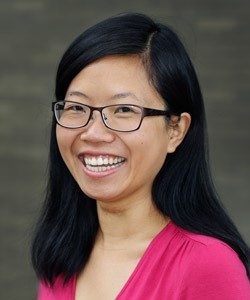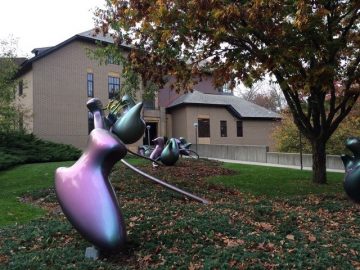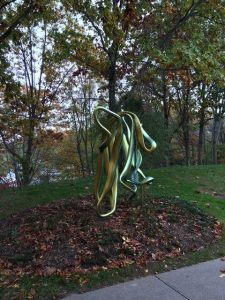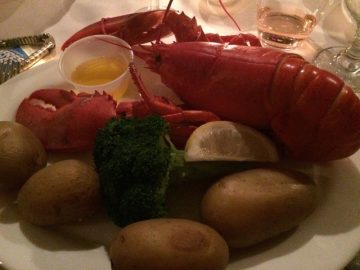 By Dr. Amy Lee, Research Associate, Hancock Lab
By Dr. Amy Lee, Research Associate, Hancock Lab
 I had the pleasure of attending the inaugural meeting on Systems Immunology at the beautiful Cold Spring Harbor Laboratory (CSHL) campus in Cold Spring Harbor, New York. The campus is located on the north shore of Long Island, surrounded by beautiful forests with hiking trails and a private swimming beach. Conference attendees could stay in quaint little cabins in the woods uphill from the main conference centre, as well as share meals everyday with fellow conference attendees during which great scientific discussions happened. I have always enjoyed attending meetings at the CSHL campus, as it brings back fond memories of fun science camps.
I had the pleasure of attending the inaugural meeting on Systems Immunology at the beautiful Cold Spring Harbor Laboratory (CSHL) campus in Cold Spring Harbor, New York. The campus is located on the north shore of Long Island, surrounded by beautiful forests with hiking trails and a private swimming beach. Conference attendees could stay in quaint little cabins in the woods uphill from the main conference centre, as well as share meals everyday with fellow conference attendees during which great scientific discussions happened. I have always enjoyed attending meetings at the CSHL campus, as it brings back fond memories of fun science camps.

The focus of this meeting was to bring together the diverse disciplines of experimental, computational and mathematical modeling to study the function and the regulation of the immune system. As systems immunology is a nascent field, this meeting created a fantastic environment for collaborations to take place between immunologists and systems biologists. I particularly enjoyed talks on applying single-cell OMICs to tease apart unique functions of immune cell populations from heterogeneous samples (see work by Rahul Satija and Alexandra-Chloe Villani), as well as identifying new cell types (see work by Ana Cvejic and AC Villani). Another exciting area of research focused on providing functional insights to genome-wide association studies (GWAS) on immune diseases (see work by Emily R. Miraldi and Gosia Trynka). As this is one of my research areas (and I presented a poster on using transcriptional profiling of stem cell-derived macrophages to provide functional  insights to GWAS), I had a great discussion with Gosia on additional statistical analyses to shore up my hypothesis. Last but not least, we heard from Kristin Scheible and Petter Brodin on utilizing systems immunology approaches to understand the dynamic immune development of newborns and pre-term infants. Overall, the meeting was very enjoyable and gave me many opportunities to network and have fruitful collaborative discussions, all with the generous support from the CBR postdoctoral travel grant.
insights to GWAS), I had a great discussion with Gosia on additional statistical analyses to shore up my hypothesis. Last but not least, we heard from Kristin Scheible and Petter Brodin on utilizing systems immunology approaches to understand the dynamic immune development of newborns and pre-term infants. Overall, the meeting was very enjoyable and gave me many opportunities to network and have fruitful collaborative discussions, all with the generous support from the CBR postdoctoral travel grant.


